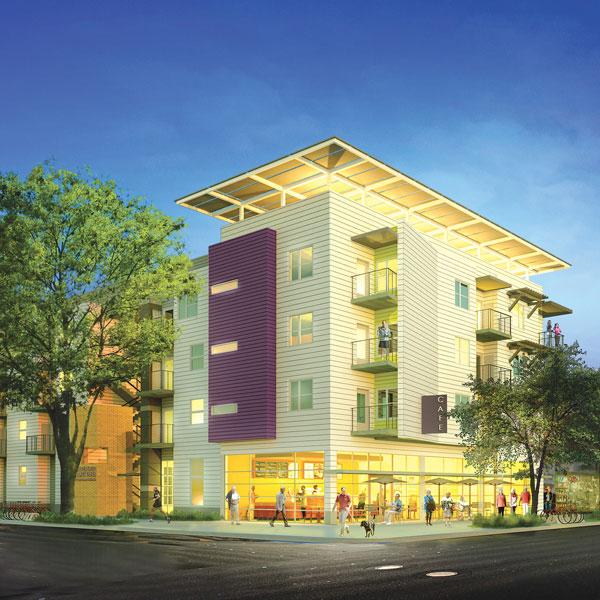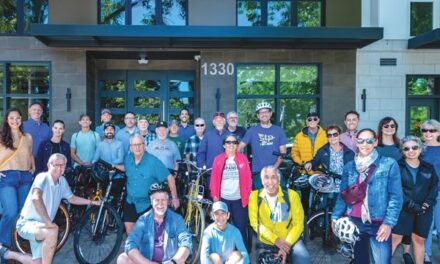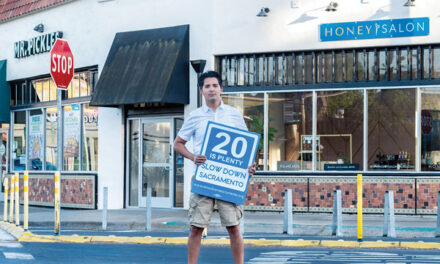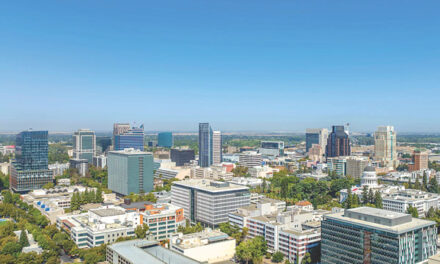The need for affordable housing is acute in Sacramento and much of California. How do we make a dent in such an intractable challenge?
For Mutual Housing California, a local nonprofit that has been building sustainable homes since 1988, the answer is straightforward. You scramble for money and creative solutions and never give up, no matter the obstacles.

A good example is Lavender Courtyard, which is finally scheduled to break ground at 16th and F streets in October as the region’s first apartment for low-income LGBTQ older residents.
More than six years in the making, this pioneering project seems to have as many funding sources as future tenants. That’s an exaggeration, but the $27.3 million apartment complex will have 53 units and at least six distinct funding sources.
As a project fact sheet attests, Lavender Courtyard “serves a target population that is extremely vulnerable—specifically to isolation, bullying, ageism, discrimination and homeless-mental health stigma.”
In other words, it is a project that’s long overdue. When it opens in March 2022, it will be a big win for this overlooked population, a big win for Mutual Housing California and a big win for our community.
“For the people that this project is hoping to serve, it’s a population that would be called the Stonewall Generation, and for this generation to fight for their civil rights, achieve their civil rights, live through the AIDS epidemic and to not be able to afford housing in their own communities, that would be particularly tragic,” says Mutual Housing California CEO Roberto Jimenez.
“But I also think this project is important for Sacramento and for cities around the country. Last I checked, there were only six LGBTQ affordable or LGBTQ welcoming communities around the country and they are in communities that are much more obvious for this type of project. Cities like New York, San Francisco, Los Angeles, Minneapolis. For Sacramento to be on the leading edge of housing like this is particularly affirming.”
According to SAGE, a national organization that advocates for older LGBTQ people, 48 percent of older same-sex couples have experienced housing discrimination. With the older LGBTQ population projected to reach 7 million by 2030, many more projects like Lavender Courtyard are needed.
There will not be a screening process to attract only LGBTQ residents, but the apartments will be marketed to that community and “extremely low-income seniors” at least 62 years old. Two dozen apartments will be reserved for seniors coming out of homelessness, with rents ranging from $264 a month for one bedroom up to $684 for two bedrooms. Exactly how much a resident pays will be tied to earnings and the Area Median Income. Someone earning 20 percent of AMI, for instance, could pay the lowest rent. A household earning 40 percent of AMI could pay the top rent.
If you look at the funding sources for the project, you get an idea how tough it’s been: $1.9 million in federal HOME funds, $11.3 million from the state of California Multifamily Housing Program, $2.5 million from the Harry and Jeanette Weinberg Foundation, $10.3 million in state and federal tax credits, an $18.3 million construction loan from U.S. Bank and an $800,000 acquisition loan from NeighborWorks Capital.
Designed by the local firm Mogavero Architects, the project will look good too, with energy efficient units, rooftop solar, and a design situated around common rooms and a courtyard to enhance community and social engagement.
Projects like this don’t happen without a formidable team. Lavender has so many champions it’s hard to list them all. Notable is Rachel Iskow, Jimenez’s predecessor at Mutual Housing who built the organization from a tiny backwater into a regional force for affordable housing. Departing City Councilmember Steve Hansen and Mayor Darrell Steinberg have been key to moving Lavender through the bureaucracy.
Credit must also go to California voters who approved Propositions 1 and 2 in November 2018, authorizing bonds that could be used for veterans, homeless and other marginalized populations.
Anytime you can turn a vacant and blighted lot into affordable housing, you have done something special. More than some other high-profile projects on the city’s drawing boards, Lavender Courtyard—especially in this age of COVID-19 and bitterly divisive politics—is a story to celebrate.
Gary Delsohn can be reached at gdelsohn@gmail.com. Follow us on Facebook, Twitter and Instagram: @insidesacramento.















